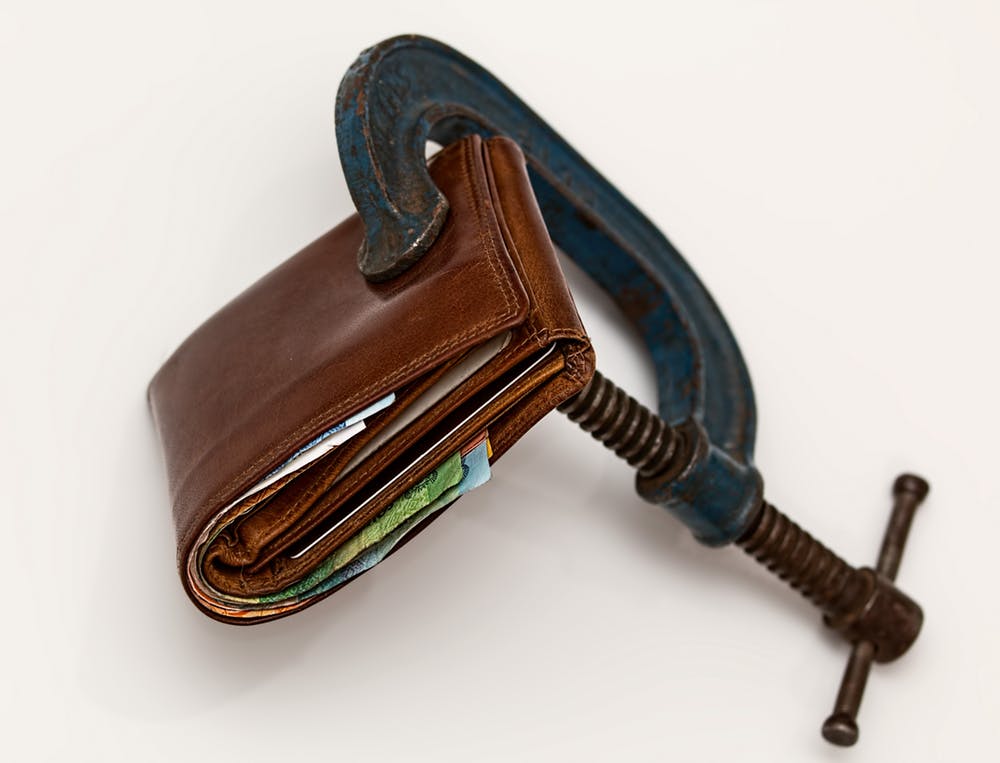This isn’t a complex thing. It’s a simple formula. Money in vs money out. Following the simple way to save and grow your wealth is the best place to start. Your financial journey should not be intimidating – it is easy to follow a set of steps. The hardest part is sticking to it.
If you look around the internet, there are thousands of sites dedicated to helping you on your way. These are the basic steps in an easy to understand format.
I’m just going to break it down into 3 easy steps. There are more steps beyond this but you need to take care of these first before you can’t start really building. Some people are in different situations, in different environments so you’ll need to tailor it to your situation.
Step 1: Create a budget
Creating a budget is easy – sticking to it is the hard part. What you’ll need to do is look at what money is coming in and what you’re spending it on. You’ll need to nail this in order to save and grow your wealth.
Every dollar should have a task. Whether that is associated with bills, food, savings, debt or anything else – each dollar needs something to do. There are literally thousands of websites that have budgeting examples. Find one that works for you and begin assigning where you spend your money.
If you find that the amount of money coming in is less than what you’re spending, then you’ll need to make compromises. I’m a firm believer that you don’t have to cut everything out of your life in order to save money. Just compromise.
Once you look at what you’re spending, you can identify where to make a compromise. This is an important step because you need to see what each dollar is doing.

Compromising
An important part of budgeting is compromising.
Compromising isn’t about removing everything in your budget. It’s about finding a better use for each dollar so it works for you, rather than you working for it. This will help you save and grow your wealth.
Are you spending too much on coffee each week? THink about making it at home or even getting a smaller size coffee. Say you get 1 coffee a day at $4.00 – a smaller coffee may cost $3.50. THat $0.50 per coffee adds up over time. $2.50 a week > over $100 a year. You still get your caffeine fix but your saving money in the interim. Make it at home costs about $1.50 per cup once you factor in buying your own beans etc. Buying a coffee each day can add up to over $1000 per year but making it at home will cost you about $350 a year. THat’s nearly $700 saved towards something else.
If you combine this with a microinvesting app like Raiz then you’re on the right path.
Once you have your budget drafted, it’s now time to start an emergency fund
Step 2: Start an emergency fund
In this first step, your goal is to save about $1-2,000 as fast as you can. Your emergency fund will cover those unexpected life events you can’t plan for. Without an emergency fund, most people feel like they have to go into debt to cover surprise expenses like a busted pipe or medical bills. But not you! You’re not doing debt anymore.
Step 3: Eliminate Debt
Whilst not impossible, it is increasingly difficult to grow your wealth if you have bad debt. One of your priorities, once you have your emergency fund and budget, is to get rid of your bad debt.
Bad debt, is more or less, anything that isn’t a mortgage. Think credit cards, medical bills, personal loans, car loans etc. All these types of loans are eating into your wealth.
There are thousands of ways to eliminate debt – one of the more popular methods is the debt snowball method.
The Debt Snowball Method
It is simple to follow, harder to stick to when you first see those numbers. The basic principle of the method is to write down all your debt balances and order them smallest to largest. Some people don’t worry about the interest rates (that’s more of a debt avalanche method) but it’s up to you.
Now it’s time to attack the first balance on your list. Pay as much as you can each month while making the minimum payments on your other debts.
When you’ve paid the first one off, add those payments to the monthly payment on your next debt and start attacking it. The idea behind this is the immediate victories you can achieve by eliminating the smallest debt. There is psychology at play here – if you see some progress then you are more likely to stick to the plan.
That’s it – the simple introduction to growing your wealth. You can’t grow your wealth if you’re being weighed down by bad debt.
Extra reading
I’d suggest two books (or you can check out my Top 5 Personal Finance Books for Beginners).
- Scott Pape – The Barefoot Investor
- Dave Ramsay – Total Money Makeover
